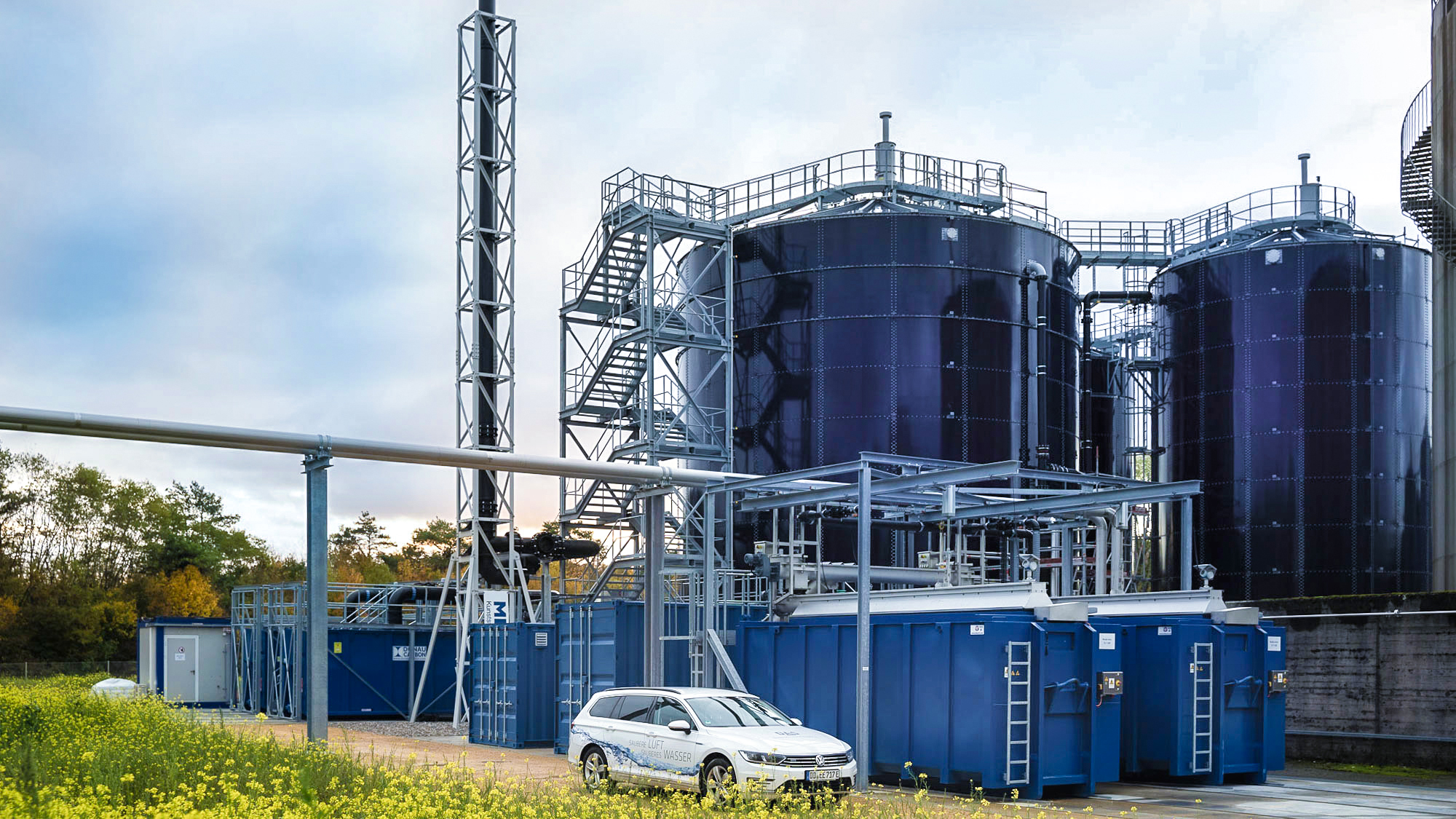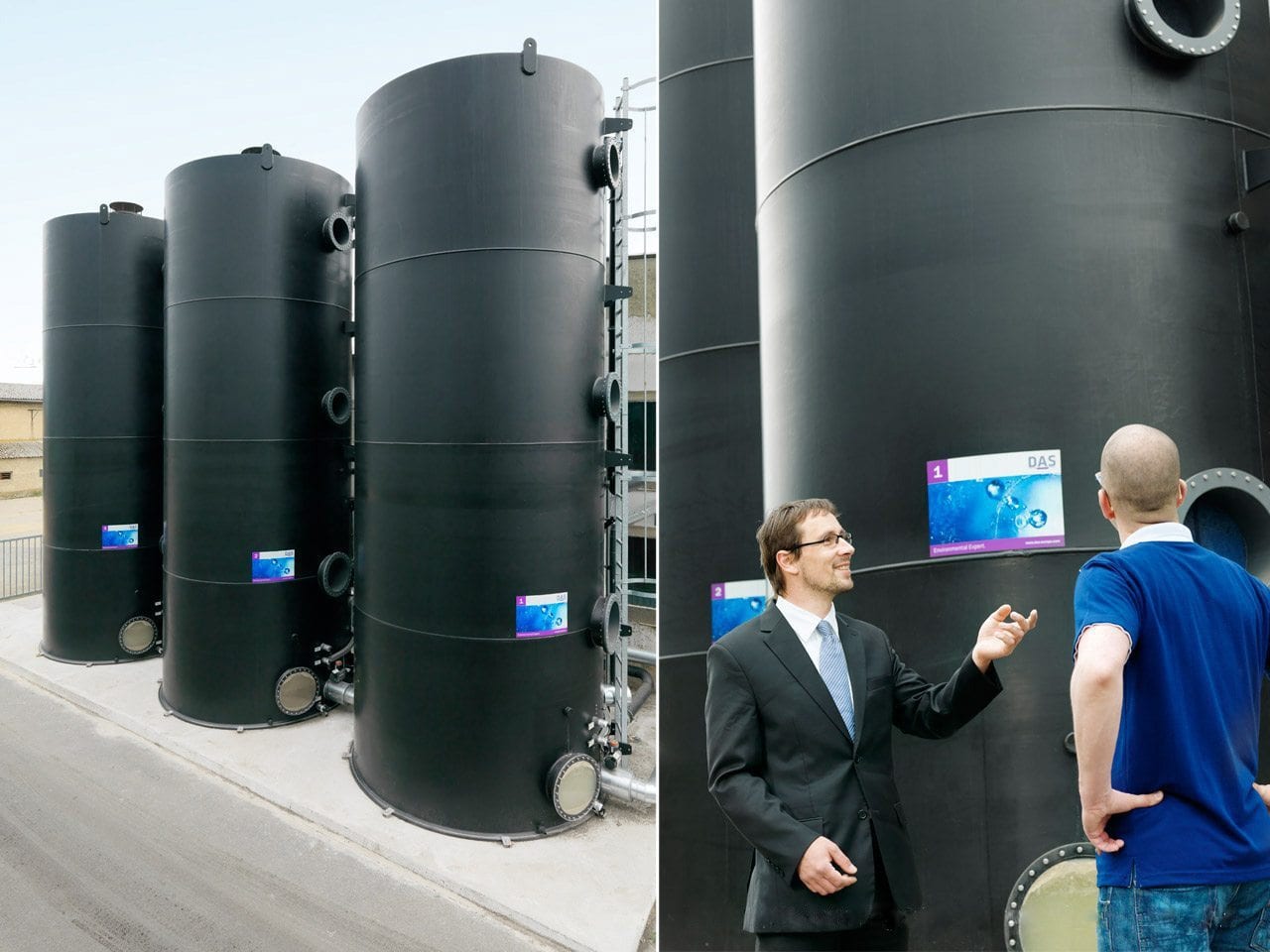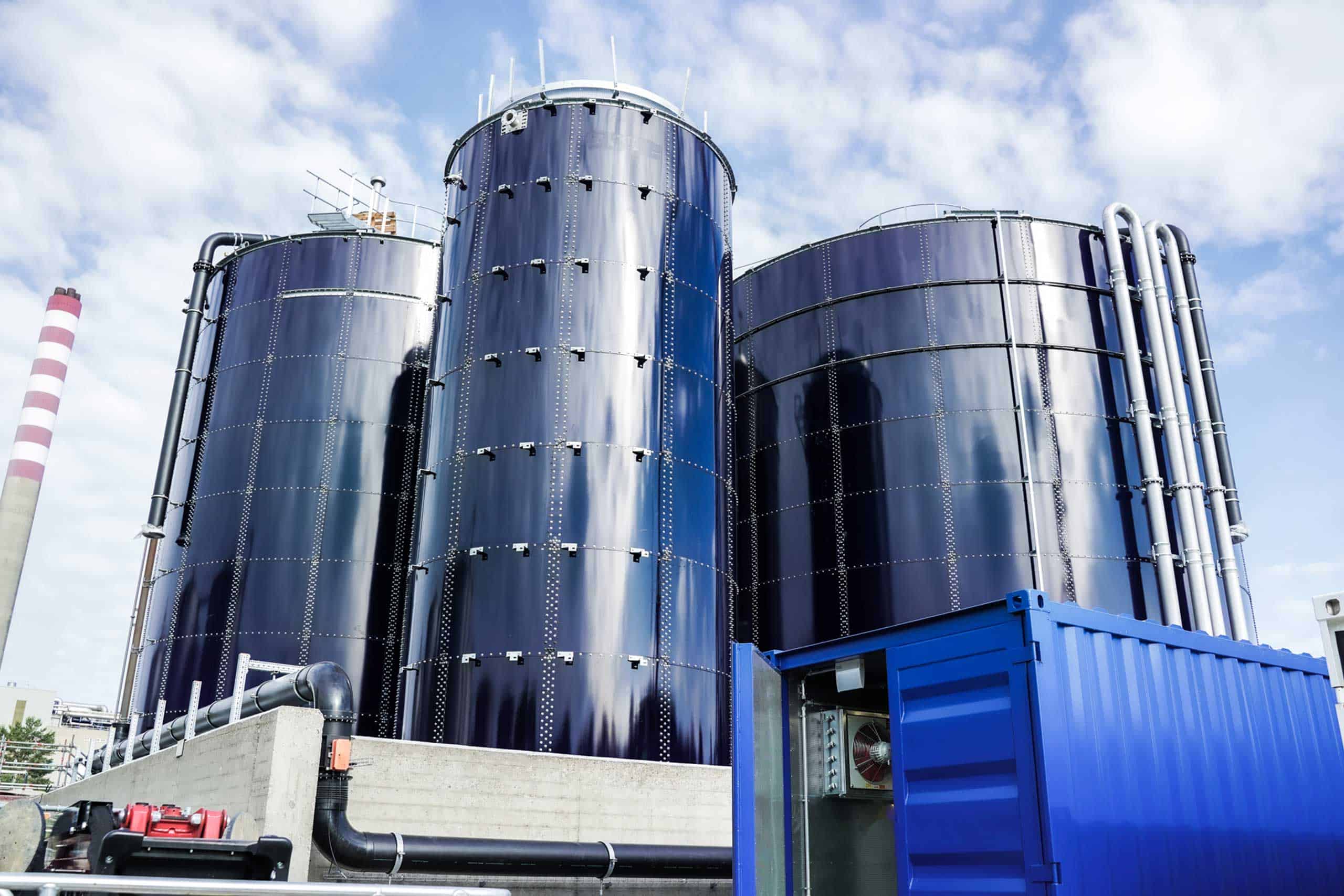Solutions for Biological Wastewater Treatment
Thanks to our broad portfolio of biological aerobic and anerobic wastewater treatment processes, we are always able to respond individually to the respective circumstances of our customers and thus build the best possible wastewater treatment plant for you.
Our solutions are successfully used in the chemical and pharmaceutical industries, semiconductor production and the energy sector. Biological processes are also usually the best solution in the pulp and paper industry, in laundries and textile production as well as in food and agricultural companies.
Functionality & Use of Biological Wastewater Treatment
The biological treatment of industrial wastewater makes it possible to effectively remove organic wastewater constituents such as proteins, fats and sugars as well as ammonium and nitrate contamination from industrial wastewater. With the help of billions of microorganisms, the substances dissolved in the wastewater are converted into solid, settleable biomass during biological treatment. In a subsequent process, this is separated from the water by sedimentation and then partially returned to the treatment process.
After biological treatment, the cleaned water can be returned to natural waters or reused in the production process with appropriate further treatment without any adverse effects on the environment.
Biological Aerobic and Anerobic Wastewater Treatment
In the biological treatment of wastewater, a distinction is made between two main types of processes: the aerobic and the anerobic process. The distinction is very simple. While aerobic wastewater treatment requires the use of oxygen, the anerobic process does not.
Both variants have some clear advantages and disadvantages, which must be taken into account depending on customer requirements. While there is usually less odour nuisance with aerobic treatment and nutrient removal is often more effective, oxygen enrichment and the disposal of biomass mean that significantly higher overall energy consumption and increased operating and maintenance costs must be expected.
Anerobic wastewater treatment processes are often cheaper and more flexible, and the biogas produced can be used as a source of renewable energy. However, it is not uncommon for both wastewater treatment processes to be used in one wastewater treatment plant in order to ensure energy- and cost-efficient treatment in compliance with the respective regulatory requirements for discharge.
MBBR Process (Moving Bed Biofilm Reactor)
Flexible, Reliable & Economical in Operation — DAS Complete Solutions for Biological Wastewater Treatment using the MBBR Process
The MBBR process (fluidised bed process) is a technology for biological wastewater treatment. In this process, microorganisms are cultivated as a biofilm on carrier material. These microorganisms are responsible for the degradation of both organic wastewater constituents and nitrogen compounds. Due to the microorganisms living in biofilms, the MBBR treatment process is very robust and much more stable than other biological treatment technologies.
As with other biological processes, excess sludge is also produced during wastewater treatment with MBBR bioreactors. However, the quantity is significantly lower than in conventional activated sludge processes with a similar capacity. Nevertheless, the treated wastewater usually has to be separated from the resulting sludge after treatment in the MBBR. This can be done in a secondary clarifier by sedimentation, for example. In the case of indirect discharge into another wastewater treatment plant, it is also possible to consider dispensing with sludge separation if the capacity and design of the wastewater treatment plant allow this and undesirable sedimentation processes on the transport route can be ruled out.
It is also possible to use the fluidised bed process anaerobically — in this case, mixing takes place with the aid of pumps or an agitator.

All MBBR Systems offer the Following Advantages:
- Compact biological treatment process
- High performance
- Simple operation
- High stability even under difficult operating conditions
- Low production of excess sludge
- No recirculation of biomass
Advantages of the MBBR-Process Compared to the Activated Sludge Process:
One disadvantage of the activated sludge processes is that, when retrieving the excess sludge, part of the microorganisms that are suspended within the sludge are removed with it. Even when re-adding re-circulated sludge from the clarification stage, the microorganisms only have a short life span. Due to being immobilized on the carrier material, microorganisms in the MBBR method exhibit a much longer life span. Microorganisms that specialize in degradation-resistant compounds have very long life spans and, therefore, are able to establish themselves. In all, the MBBR purification process is significantly more stable than the activated sludge process, and load peaks are well-absorbed.
DAS Environmental Expert uses a carrier material that features a very large specific surface that allows extremely compact MBBR systems. The shape of the filling material prevents the carrier material from interlocking and ensures the system reaches a consistently high degradation capacity.
Our MBBR systems can be designed as a compact unit or as modular bioreactors. The modular reactors require much less space than traditional activated sludge facilities, and no civil engineering construction is necessary. Special process engineering and design make it possible to use our MBBR system as a denitrification reactor and operate it as such.
Biological Wastewater Treatment with the Membrane Bio Reactor (MBR)
The Membrane Bio Reactor (MBR) is another option to achieve the oxidation and nitrification of organic substances in wastewaters; the degradation of pollutants takes place in an aerated sludge tank with a very high sludge concentration.
Using membranes, the separation of the treated wastewater from the sludge is achieved via ultrafiltration. The membrane filter module can also be submerged and integrated into pre-existing biological treatment stages; however, a separate reactor is considerably easier to service.
The MBR process is suitable for the biological treatment of highly contaminated industrial wastewaters. In addition, it is also often used for the purification of sanitary wastewaters and for the treatment of grey, rain and surface water.
Due to the membranes’ very small pore diameter, bacteria and viruses cannot pass through the membrane filter, thus, germs are withheld. The water quality of the wastewater treatment plant’s effluent meets the EU Bathing Water Directive. With its compact design, the MBR system can even be designed in container form as a fully mobile solution to suit temporary applications
Biological Wastewater Treatment with the Trickle-Flow-Reactor
During treatment within a Trickle-Flow-Reactor (TFR) the wastewater is sprinkled over a fixed bed. The system uses a very light, small-grain carrier material that, within days, is covered by a highly active mixed population of bacteria that have adapted to their respective conditions.
The constant inflow of wastewater that trickles down over the bed is aerated by ambient air that is supplied by a ventilator at a minimum pressure flowing in the opposite direction, allowing the TFR technology to operate with minimum effort. In regular intervals, regeneration is initiated automatically, which rejuvenates the mixed microbial population and washes out excess biomass from the system without noticeably affecting the reactor’s capacity. The liquid sludge can be further drained and, depending on local conditions, can be passed on to facilities for composting or humification.
DAS Environmental Expert reactors are lightweight and low-maintenance. They require little space and are extremely energy efficient. Due to its highly active biomass, the TFR process reaches more than 90% of its required degradation capacity within the first 10 days.

Biological Wastewater Treatment with the SBR Method
The Sequenced Batch Reactor (SBR) is an activated sludge technology for the treatment of wastewater based on two separate systems. A pre-treatment stage is used for mechanical retention of coarse material and also functions as a collection tank from which the contaminated wastewater advances to a biological activation or secondary sedimentation tank, the so-called SBR-tank.
Within the SBR tank, the inflowing wastewater is purified through a cyclic process and the aid of activated sludge containing a high concentration of microorganisms that remove organic substances from the wastewater. In order to ensure proper mixing and oxygen supply, the wastewater is circulated in regular intervals via air supply.
The aeration phase is followed by a resting phase without aeration, which causes the activated sludge to settle at the bottom of the reactor. In the upper part of the SBR tank, however, a clear water zone is formed. Finally, the purified water, removed from this upper water zone, is discharged into a receiving tank or drainage system. The excess sludge is drained from the bottom of the reactor and re-added to the pre-treatment stage; and the process starts again.
Anaerobic Biological Wastewater Treatment Utilizing the UASB Process
The Upflow Anaerobic Sludge Blanket (UASB) method is often used for biological treatment of industrial wastewaters. This method removes large amounts of organic contents, dissolved sugars, proteins and fats from wastewater.
Using microorganisms in a special reactor absent of atmospheric oxygen, the pollutants are chemically transformed into biogas. Biogas is a gaseous mixture that primarily contains methane and carbon dioxide and can be used as an energy source in production, typically in a cogeneration unit, to generate power and heat.
This particular version of a biogas plant is primarily used for the treatment of wastewaters in the food-and-beverage industry, as well as in the pulp-and-paper industry.



